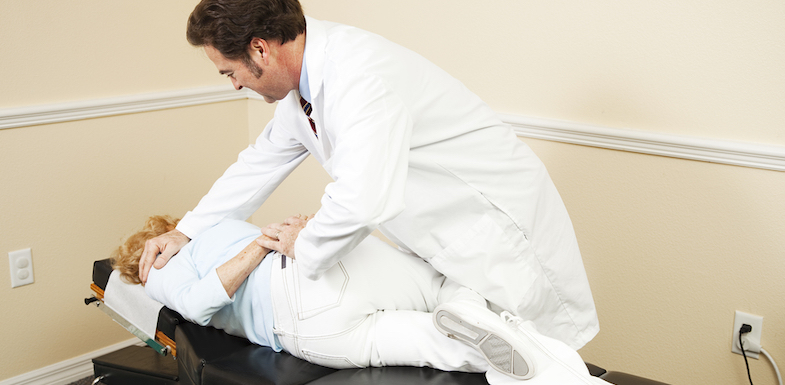Chiropractic Manipulations
Chiropractic manipulation includes a variety of techniques that chiropractors use to help bring your spine to proper alignment. Widely accepted in the medical community because of its effectiveness and safety in treating pain, chiropractic care offers many benefits without the risk of side effects. Now more than ever, patients are turning to chiropractic manipulation to find relief. Here’s what you should know.
What is chiropractic manipulation?
Chiropractic manipulation techniques focus on disorders of the neuromusculoskeletal system. These days, chiropractors use scientifically validated, non-drug related treatments to manage muscle and joint conditions.
Doctors of chiropractic (D.C.) are referred to as chiropractors or chiropractic physicians. In Arizona, chiropractors practice a drug-free, hands-on approach to healthcare that includes patient examination, diagnosis, and treatment.
Chiropractors have broad diagnostic skills but may also have advanced board certifications in physiotherapy rehabilitative exercises and other treatment modalities. Chiropractors may also offer acupuncture or other alternative medicine therapies.
Rather than focusing solely on pain symptoms, chiropractic care includes not only spinal manipulation but also a comprehensive look at lifestyle factors (e.g., diet, occupation, habits, and activity levels) that might be contributing to your pain.
What conditions can chiropractic manipulation help with?
When your vertebrae become misaligned, they can place pressure on the spinal nerves and cause pain. The most common condition chiropractic care treats is this pressure on the nerves, also known as spinal dysfunction, vertebral restriction, or subluxation.
Subluxation may occur as a result of a tissue injury caused by a single traumatic event, such as improper lifting of a heavy object. Repetitive stresses, even minor ones like sitting with poor spinal posture for extended periods of time, can cause subluxation.
Chiropractic manipulation can also help with:
- Lower back pain
- Neck pain
- Pain in the joints of the shoulders, knees, and hips
- Acute injury (e.g., whiplash from a car accident)
- Migraine pain
- Spinal stenosis
Injuries to the joints and surrounding muscles often cause physical and chemical changes that can result in inflammation, pain, and less mobility. By manipulating the affected joint and tissues, a chiropractor can restore mobility. This can alleviate pain and muscle tightness and allow tissues to heal.
An overview of chiropractic manipulation techniques
There are a variety of chiropractic techniques that your chiropractor may use to bring your spine to alignment. Some of these are done using the hands only, while others might use handheld devices or special tables.
Here are the most common chiropractic manipulation techniques, with additional information on the more common approaches.
Diversified
The diversified technique (also referred to as spinal manipulation or direct thrust) restores joint mobility by applying one or more high velocity/low amplitude thrusts to the affected joint.
When your vertebrae are adjusted in this way, tiny pockets of gas are released from the joints, sometimes making a popping noise. This is the same sound as when knuckles crack. While some people may be unnerved by this sound, it is safe and not a cause for alarm.
Spinal mobilization
For patients who require a more gentle approach, the spine is adjusted using gentle stretches and firm pressure. This is done instead of the high-velocity thrusts of the diversified technique.
Cox-Flexion
With Cox-Flexion, you receive treatment on a table that flexes the entire body.
While lying down, you hold onto a bar at the top of the table. The table moves up and down smoothly, creating a wave in your spine.
Articulatory
Articulatory adjustments move your joint through its entire range of motion, applying gentle pressure when the joint begins to stiffen.
With constant pressure, the joint can slowly begin to release, improving range of motion.
Other techniques
Depending on your underlying condition, other common techniques include:
- Spinal decompression
- Myofascial release
- Muscle energy technique
- Indirect positional technique
- Cervical spine manipulation
- Functional technique
Cox-Flexion is just one type of adjustment delivered by a specialized table. Your chiropractor may also use a drop table to allow gravity to assist in adjusting a specific vertebra and with other manipulation techniques.
You and your chiropractor will discuss your options before treatment to find the one that will work best for you. You can learn more about how chiropractic care works here.
Side effects and risks
Chiropractic manipulation has an excellent safety record, but as with all medical procedures there are some risks. The risks associated with chiropractic, however, are very small.
Many patients feel immediate relief following chiropractic treatment, but some may experience mild soreness or aching, just as you might after exercise. Current research shows if patients experience minor discomfort or soreness following spinal manipulation, it typically fades within 24 hours.
However, some patients may not be good candidates for cervical (neck) manipulation as reports have associated upper high-velocity neck manipulation with a certain kind of stroke, or vertebral artery dissection. Patients with a history of a stroke should talk to their doctor about their risks before receiving chiropractic care. Do note that the best evidence indicates that artery injuries with high-velocity upper neck manipulation are extremely rare: about one case in every six million manipulations.
Recovery
There is rarely any recovery period after receiving chiropractic care. In some cases, patients may feel slightly dizzy after treatment, but this generally passes within a few minutes. As noted, you may also be slightly sore.
Drink plenty of water to increase lubrication in your joints, and pay attention to any signs that you need to rest after treatment. In general, though, treatments do not require any time off from regular activity.
Could chiropractic manipulation help me?
You don’t have to live with back pain or reduced mobility due to joint stiffness. Chiropractic manipulation techniques allow many patients to manage their pain without interventional procedures or medications.
Chiropractors also manage the whole person—not just one condition—and incorporate holistic lifestyle guidance into their treatment approaches. This can be especially helpful if you’re also managing another chronic condition.

